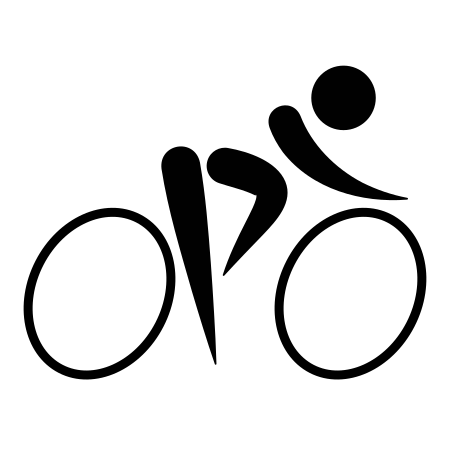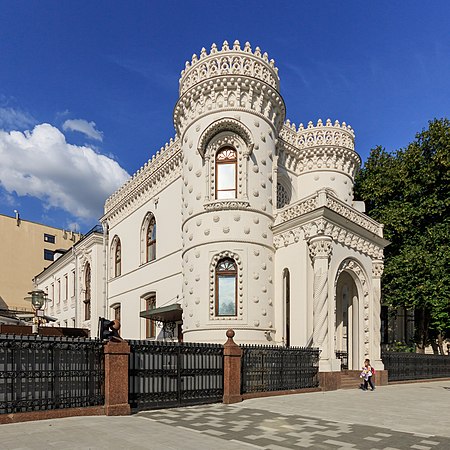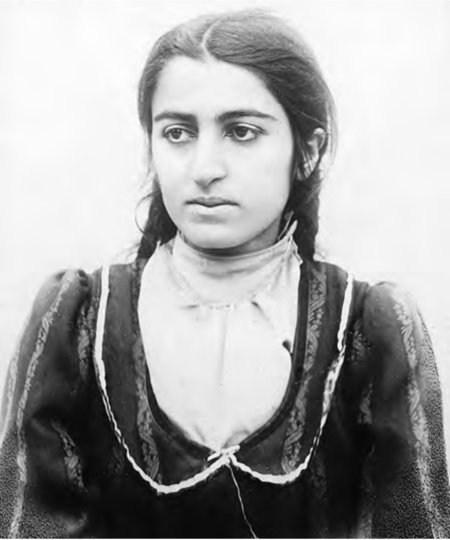Apothecary
|
Read other articles:

سباق الدراجات على الطريق للسيدات 2019 تفاصيل السباقسلسلة26. التصنيف العالمي للسيدات للاتحاد الدولي للدراجاتمراحل97التواريخ01 يناير – 31 ديسمبر 2019المسافات9٬940٫56 كمالفرق44المنصةالفائز لورينا ويبيس (باركهوتل فالكنبورغ [الإنجليزية])الثاني ماريان فوس (ليف ريسينغ [الإنجليز…

Questa voce o sezione sull'argomento programmi televisivi italiani non cita le fonti necessarie o quelle presenti sono insufficienti. Commento: Eccessivita di alcuni fattoidi irrilevanti date giorno per giorno senza fonti Puoi migliorare questa voce aggiungendo citazioni da fonti attendibili secondo le linee guida sull'uso delle fonti. Segui i suggerimenti del progetto di riferimento. VG21 NewsScreenshot della sigla usato dal novembre 2014 al 4 settembre 2023Altri titoliVideo Giornale Paese…

この項目には、一部のコンピュータや閲覧ソフトで表示できない文字が含まれています(詳細)。 数字の大字(だいじ)は、漢数字の一種。通常用いる単純な字形の漢数字(小字)の代わりに同じ音の別の漢字を用いるものである。 概要 壱万円日本銀行券(「壱」が大字) 弐千円日本銀行券(「弐」が大字) 漢数字には「一」「二」「三」と続く小字と、「壱」「弐」…

Koordinat: 35°51′40″N 139°38′39″E / 35.8611°N 139.6442°E / 35.8611; 139.6442 Keuskupan SaitamaDioecesis Saitamaensisカトリックさいたま教区Katedral UrawaLokasiNegaraJepangProvinsi gerejawiTokyoMetropolitTokyoStatistikLuas22.604 km2 (8.727 sq mi)Populasi- Total- Katolik(per 2010)14.139.486100,477 (0.7%)InformasiRitusRitus LatinKatedralKatedral Santa Teresa dan Kanak-Kanak Yesus di Urawa, SaitamaKepemimpinan kiniPausF…

Федеральное агентство по делам Содружества Независимых Государств, соотечественников, проживающих за рубежом, и по международному гуманитарному сотрудничествусокращённо: Россотрудничество Общая информация Страна Россия Юрисдикция Россия Дата создания 6 сентября 20…

This article has multiple issues. Please help improve it or discuss these issues on the talk page. (Learn how and when to remove these template messages) This article needs additional citations for verification. Please help improve this article by adding citations to reliable sources. Unsourced material may be challenged and removed.Find sources: List of political parties in Thailand – news · newspapers · books · scholar · JSTOR (February 2019) (Learn how…

Disambiguazione – Se stai cercando l'elettrotreno della metropolitana di Milano, vedi Meneghino (treno). Meneghino AutoreCarlo Maria Maggi 1ª app.1695 1ª app. inIl manco male Caratteristiche immaginarieSessoMaschio Luogo di nascitaMilano Professioneservitore Meneghino (in dialetto milanese Meneghin, Menichino, dim. del nome di persona Domenico - Menico) è un personaggio del teatro milanese, ideato da Carlo Maria Maggi e divenuto in seguito maschera della commedia dell'arte. Prendend…

Opéra-Théâtrede Clermont-Ferrand Façade de l'opéra depuis la place de Jaude. Données clés Type Théâtre à l'italienne Lieu Clermont-Ferrand (Auvergne-Rhône-Alpes) France Coordonnées 45° 46′ 39″ nord, 3° 04′ 57″ est Architecte Jean Teillard Inauguration 14 avril 1894 Nb. de salles 1 grande salle Capacité 600 places Anciens noms Opéra municipal Gestionnaire Ville de Clermont-Ferrand Protection Classé MH (1987)[1] Site web Opéra…

Questa voce sull'argomento stagioni delle società calcistiche italiane è solo un abbozzo. Contribuisci a migliorarla secondo le convenzioni di Wikipedia. Segui i suggerimenti del progetto di riferimento. Voce principale: Associazione Calcio Mestre. Unione Sportiva MestrinaStagione 1974-1975Sport calcio Squadra Mestrina Allenatore Elvio Matè poi Giorgio Bozzato Presidente Tiziano Longhin (commissario straordinario) Serie C19º posto nel girone A. Retrocede in Serie D. Maggiori presen…

莎拉·阿什頓-西里洛2023年8月,阿什頓-西里洛穿著軍服出生 (1977-07-09) 1977年7月9日(46歲) 美國佛羅里達州国籍 美國别名莎拉·阿什頓(Sarah Ashton)莎拉·西里洛(Sarah Cirillo)金髮女郎(Blonde)职业記者、活動家、政治活動家和候選人、軍醫活跃时期2020年—雇主內華達州共和黨候選人(2020年)《Political.tips》(2020年—)《LGBTQ國度》(2022年3月—2022年10月)烏克蘭媒體�…

Protected area in London, England Grove Park Nature ReserveThe pond in Grove Park Nature ReserveNovember 2022Location of Grove Park Nature Reserve in The London Borough of LewishamTypeNature reserveLocationGrove Park in the London Borough of Lewisham, London, United KingdomCoordinates51°26′13″N 0°00′58″E / 51.437°N 0.016°E / 51.437; 0.016Area4.6 ha (11 acres)Created1984 (managed)1987 (acquired freehold)Owned byLondon Borough of LewishamOperated …

2001 studio album by Stone Temple PilotsShangri-La Dee DaStudio album by Stone Temple PilotsReleasedJune 19, 2001 (2001-06-19)RecordedJanuary–April 2001[1]StudioThe Malibu House MalibuGenreAlternative rockgrunge[2]Length47:25LabelAtlanticProducerBrendan O'BrienStone Temple Pilots chronology № 4(1999) Shangri-La Dee Da(2001) Thank You(2003) Singles from Shangri-La Dee Da Days of the WeekReleased: January 1, 2001 Hollywood BitchReleased: September 3, 2001…

American actor Robert ArthurPublicity Photo of Robert ArthurBorn(1925-06-18)June 18, 1925Aberdeen, Washington, U.S.DiedOctober 1, 2008(2008-10-01) (aged 83)Aberdeen, Washington, U.S.Years active1945-1995 Robert Paul Arthur (June 18, 1925 – October 1, 2008) was an American motion picture actor who appeared in dozens of films in the 1940s and 1950s. Biography After working in radio and serving in the Navy during World War II,[1] Arthur moved to Hollywood, where his first ro…

American historian and college president (1927-2014) Rhoda DorseyGoucher College 1994 Commencement Ceremony8th President of Goucher CollegeIn office1974 (1974) – June 30, 1994 (1994-06-30)Preceded byMarvin Banks Perry Jr.Succeeded byJudy Jolley MohrazActing President of Goucher CollegeIn office1973 (1973)–1974 (1974)Academic Dean of Goucher CollegeIn office1968 (1968)–1973 (1973) Personal detailsBorn(1927-09-09)September 9, 1927Dorchester, B…

Nepeta cataria; species of plant For other uses, see Catnip (disambiguation). Catnip Catnip flowers Scientific classification Kingdom: Plantae Clade: Tracheophytes Clade: Angiosperms Clade: Eudicots Clade: Asterids Order: Lamiales Family: Lamiaceae Genus: Nepeta Species: N. cataria Binomial name Nepeta catariaL.[1] Nepeta cataria, commonly known as catnip, catswort, catwort, and catmint, is a species of the genus Nepeta in the family Lamiaceae, native to southern and eastern Europe,…

Disambiguazione – Bangla Desh rimanda qui. Se stai cercando il singolo di George Harrison, vedi Bangla Desh (singolo). Disambiguazione – Se stai cercando il produttore musicale statunitense, vedi Bangladesh (produttore). Questa voce o sezione sull'argomento storia è ritenuta da controllare. Motivo: verifica fonti Partecipa alla discussione e/o correggi la voce. Segui i suggerimenti del progetto di riferimento. Bangladesh (dettagli) (dettagli) (BN) জাতীয়তাবা…

American broadcaster MHz NetworksType OTT platform CountryUnited StatesAvailability United States Canada Founded2001; 23 years ago (2001)HeadquartersFalls Church, VirginiaPicture format 720p or 1080i (HDTV) 480i (SDTV) Official websitemhznetworks.com MHz Networks is an American broadcaster that specializes in international television programming. Washington, D.C., broadcast operations Further information: WNVT MHz (pronounced M-H-Z) Networks began as a project of the Commonweal…

Cycling race For the men's race, see 2024 Liège–Bastogne–Liège. Cycling race 2024 Liège–Bastogne–Liège Femmes2024 UCI Women's World Tour, race 14 of 27Race detailsDates21 April 2024Distance152.9 km (95.01 mi)Winning time4h 29' 00Results Winner Grace Brown (AUS) (FDJ–Suez) Second Elisa Longo Borghini (ITA) (Lidl–Trek) Third Demi Vollering (NED) (Team SD Worx–Protime)← 2023 2025 → The 2024 Liège�…

GlenferrieStasiun komuter PTVLokasiGlenferrie Road, HawthornMelbourne, VictoriaAustraliaKoordinat37°49′18″S 145°02′12″E / 37.8216°S 145.0367°E / -37.8216; 145.0367PemilikVicTrackOperatorMetro TrainsJalur Alamein Belgrave LilydaleJumlah peron3Jumlah jalur3KonstruksiJenis strukturLayangInformasi lainZona tarifMyki Zona 1Situs webPublic Transport VictoriaSejarahDibuka3 April 1882 (1882-04-03)Operasi layanan Stasiun sebelumnya…

A photograph of Armenian refugees at Taurus Pass, by Imperial German Army medic Armin Wegner During World War I, Germany was a military ally of the Ottoman Empire, which perpetrated the Armenian genocide. Many Germans present in eastern and southern Anatolia witnessed the genocide, but censorship and self-censorship hampered these reports, while German newspapers reported Ottoman denials of the genocide. Approximately 800 officers and 25,000 soldiers of the Imperial German Army were sent to the …




